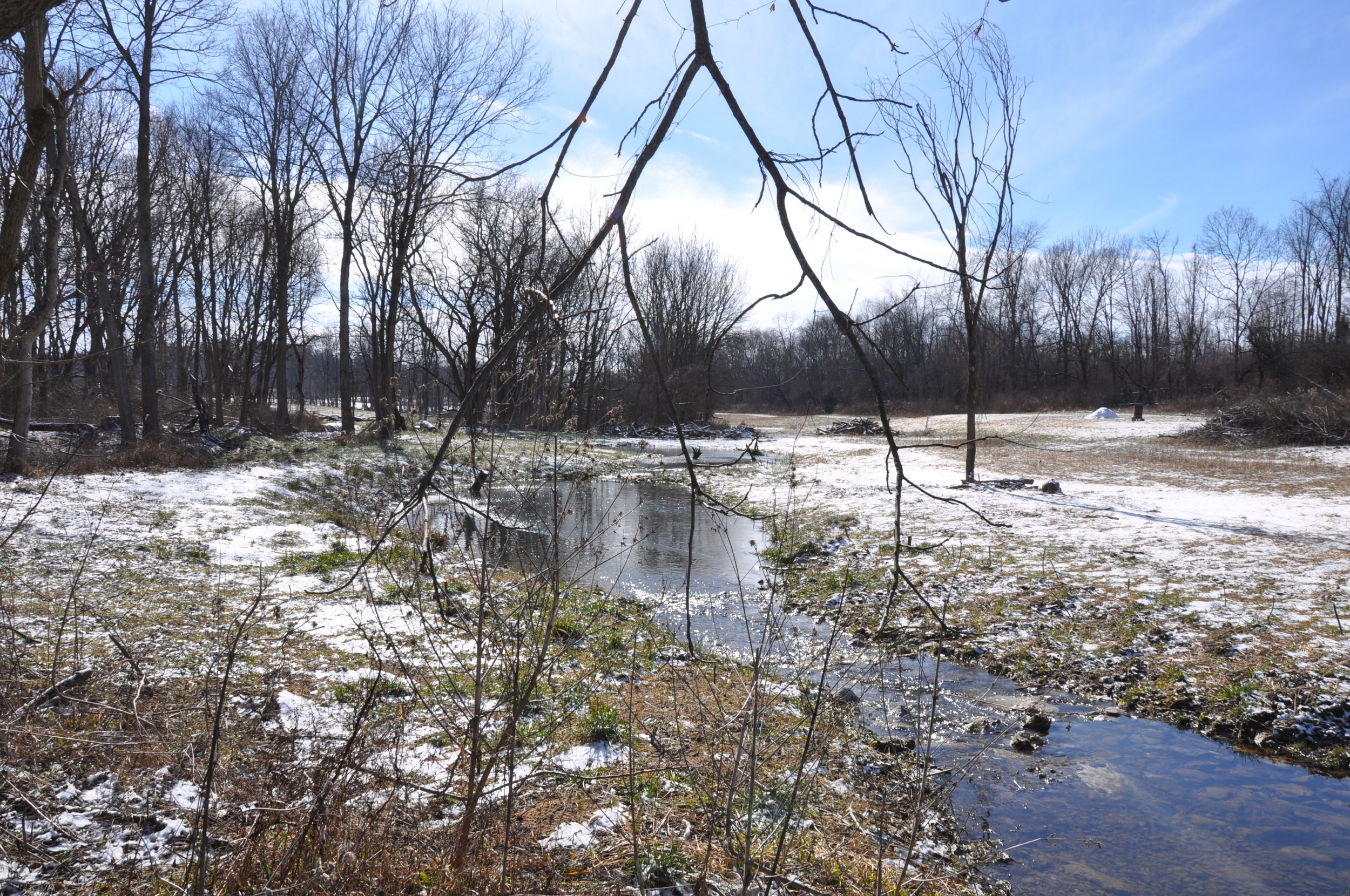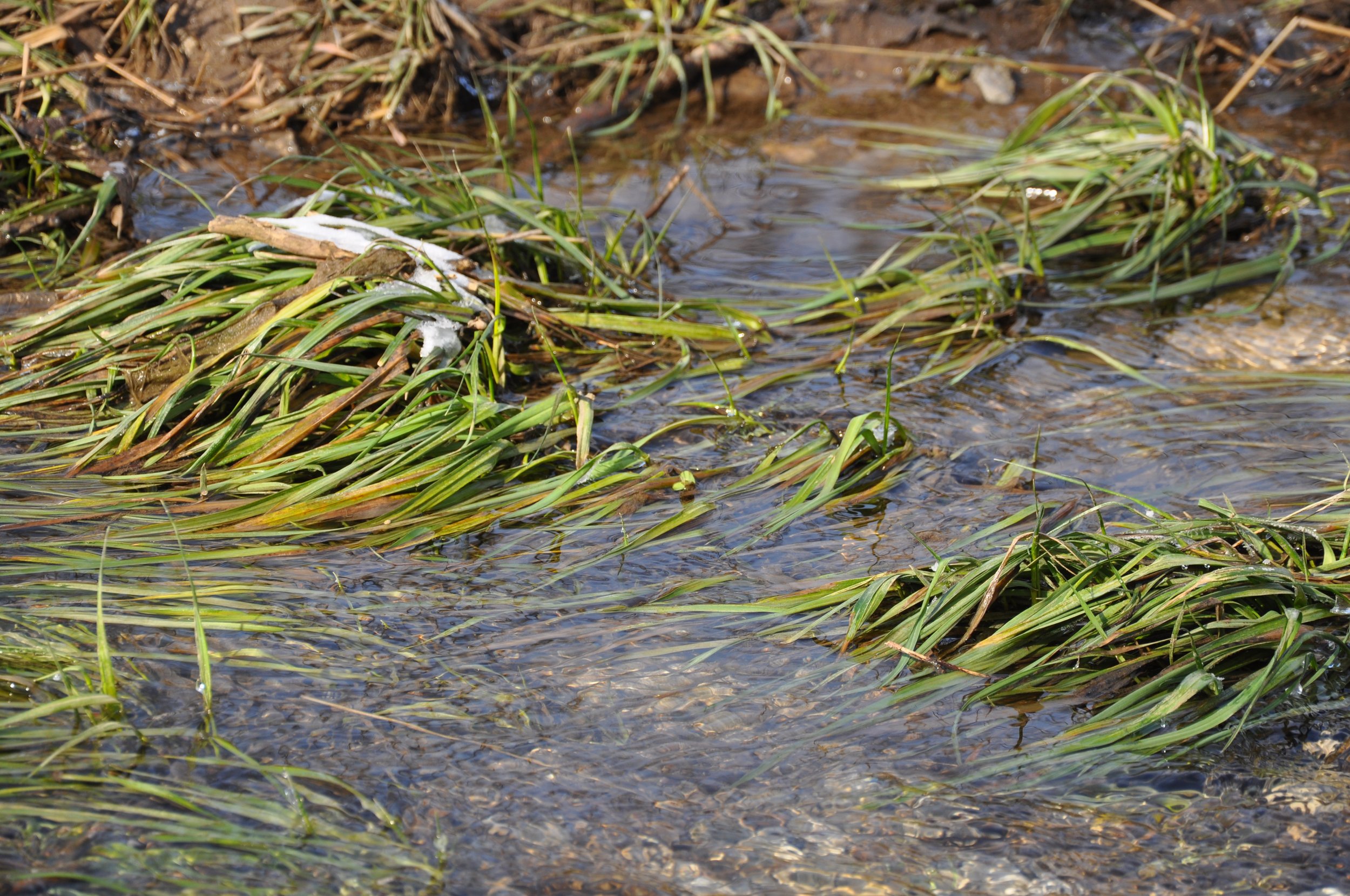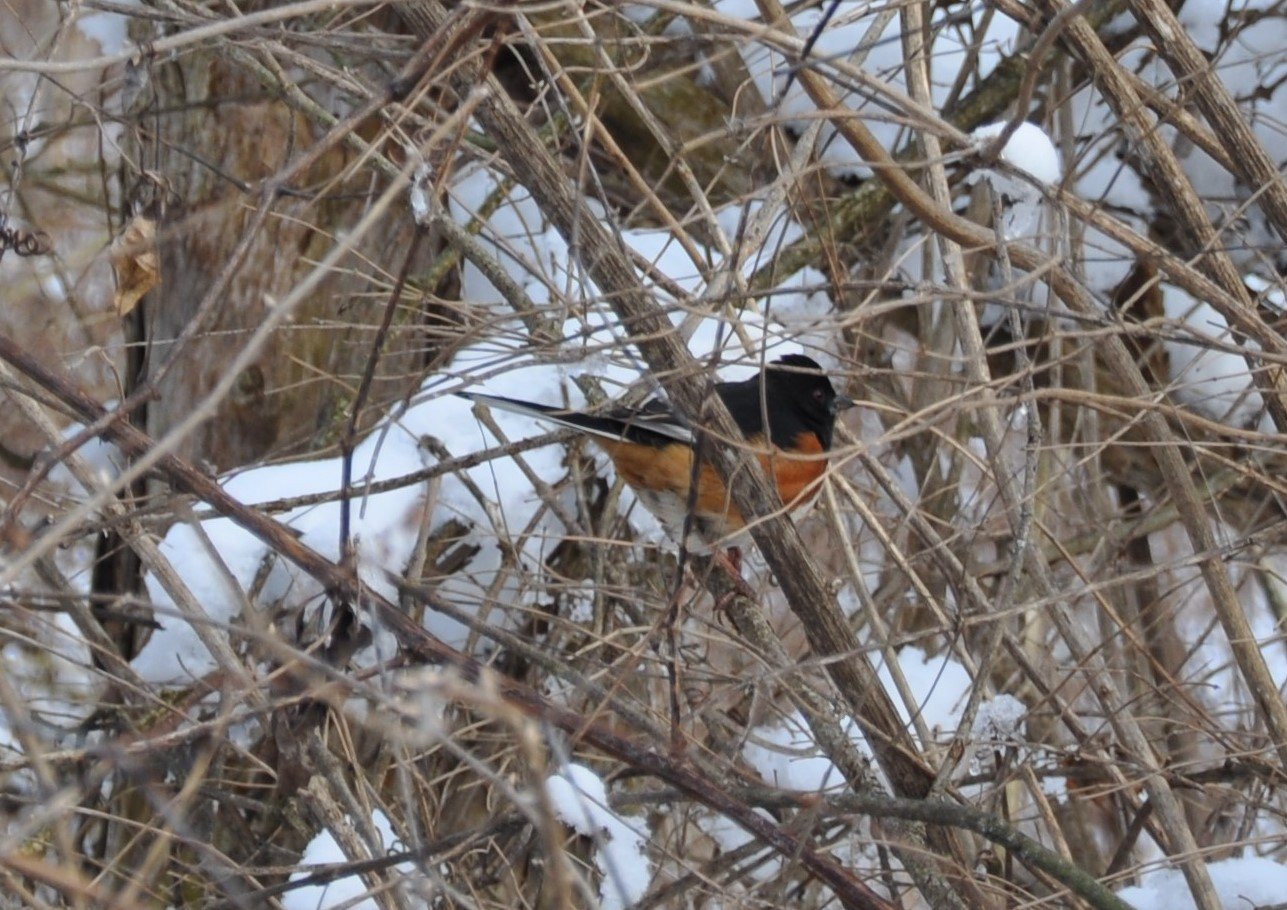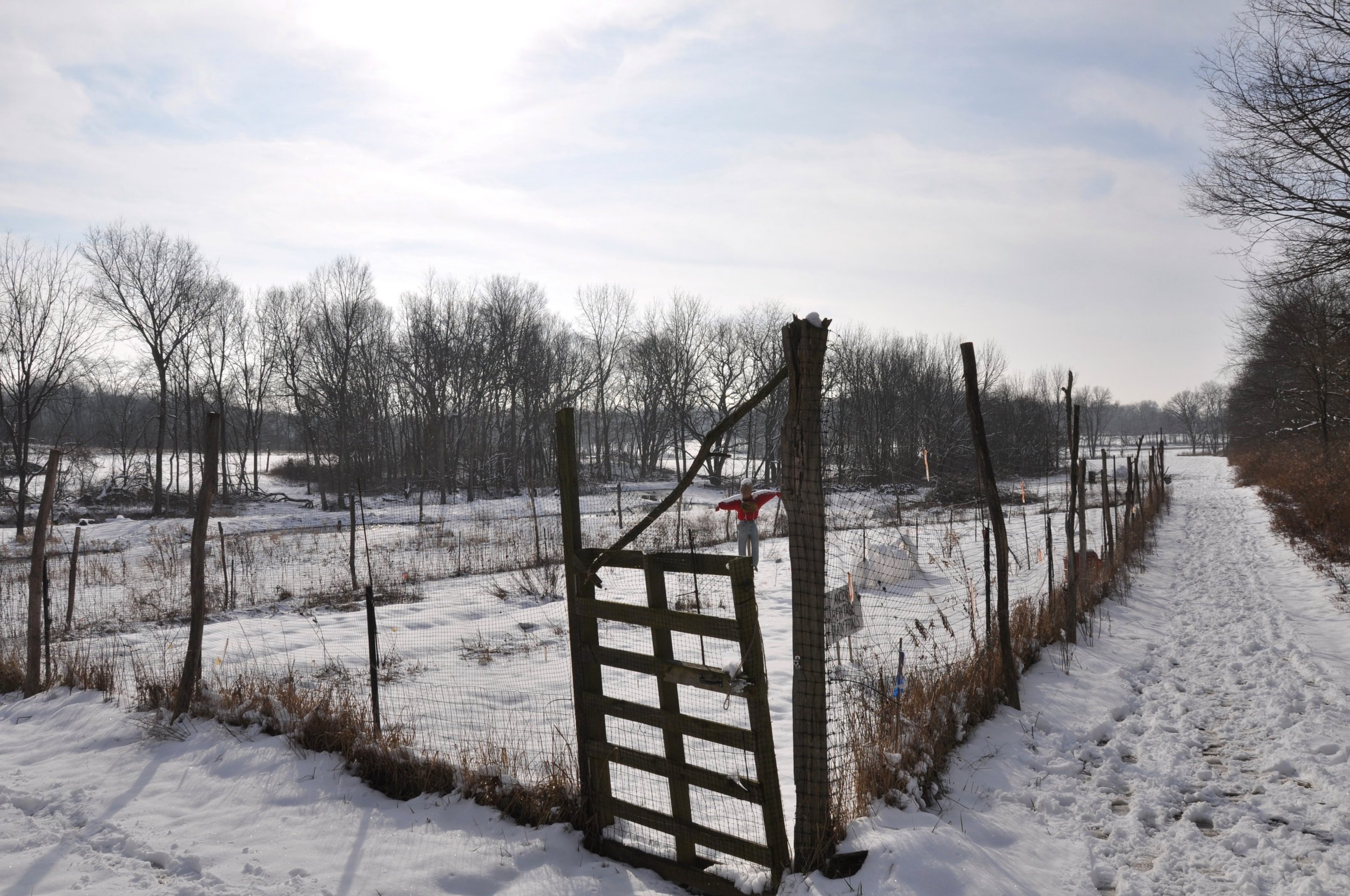Luminous Presence
Shining waves of snow. (Photo by Dennie Eagleson)
By Audrey Hackett
Walking the land on winter afternoons, I’m often alone. But never lonely. Land without human activity isn’t absence. It’s actually the opposite — luminous presence. This is true even, or especially, on sunless days. We’ve had a lot of them this winter. The sky is white, depthless. Or thick and gray and just overhead, more ceiling than sky.
On sunny days, little birds hop around in the thickets. House sparrows, nuthatches, chickadees, finches, Carolina wrens. Walking behind the barn last week, I caught a glimpse — and a photo, my hands uncharacteristically quick — of an eastern towhee, jet black, snow white, and rusty red. A shy bird I hear in the woods in summer. This was my first clear sighting of a towhee in winter.
The little birds go quiet on cloudy days. (Perhaps they’re solar powered!) I scan the trees and underbrush. No movement. Or just the bounce of twigs in a breeze. When it’s windy, though, movement is everywhere. Last year’s goldenrod and aster stalks move stiffly, in vibrational rather than expressive dance. The crowns of trees sway and nod. Sometimes I think they’re a council of kings and queens — old and wise monarchs gathered from many lands. They remember the past we’ve forgotten and augur the future we’ll never see. They have, I’m certain of it, the kindest hearts.
Two weeks ago, after heavy rains, a new presence emerged. Water. The news circulated briskly among Agraria staff: The water’s back! Portions of Jacoby Branch and its reconstructed feeder streams had been dry for months. Now there was a continuous flow, lovely to witness. Braiding and unbraiding itself over and around snags and stones, ruffling into white feathers across the choppy surface of constructed riffles. And the music! There was music, an orchestra of one.
The stream system felt whole again.
With the return of water, I could believe that other entities might also return. Somehow the water carried the magic (pulling it on a string I couldn’t see) of fish and frogs and Great Blue Herons. I suddenly felt that if I stood on the reconstructed stream banks for long enough, a new and life-filled future would float into view. How is it that a stream’s future lies behind it? My mind warped and bent. Then I remembered that the rising generations follow behind us, too. Our actions now are the magic string.
Water flowing again; glimpse of an eastern towhee; quiet luminosity (Photos by Audrey Hackett)
One afternoon I walked through a squall of snow. The big showy flakes fell like wet flowers. The air and ground were glossy with them. I walked to the stream, watched the water over water over water. Watched how the grass (so green this mild winter) bent into it, a little landscape of repeating arches. And then I saw something else. Not too far from the streamside was a delicate structure tapering to a dark point. It was the foreleg of a deer. A beautifully furred foreleg, lithe and elegant. Higher up the limb was just bone.
I looked at it for a few minutes. Reached out to touch it. Far from grisly, the encounter felt sacred. Not an absence, but a presence. The deer was here. I was here with it. And the coyote (if coyote it had been) was with us, too.
Sometimes the land puts a spell on me. Sometimes it breaks one. This moment was both at once. I felt invited into the death-life, the great wrapping mystery. And the life-death, the Mobius strip traced to the “other” side. Here on the land, life isn’t lonely. It’s holy. It’s trees and sky and water and birds and deer and all the gaps, lacks, and absences in and of those things. It’s presence, the total circuit. It’s home.
*Audrey Hackett is editor of Agraria Journal.





